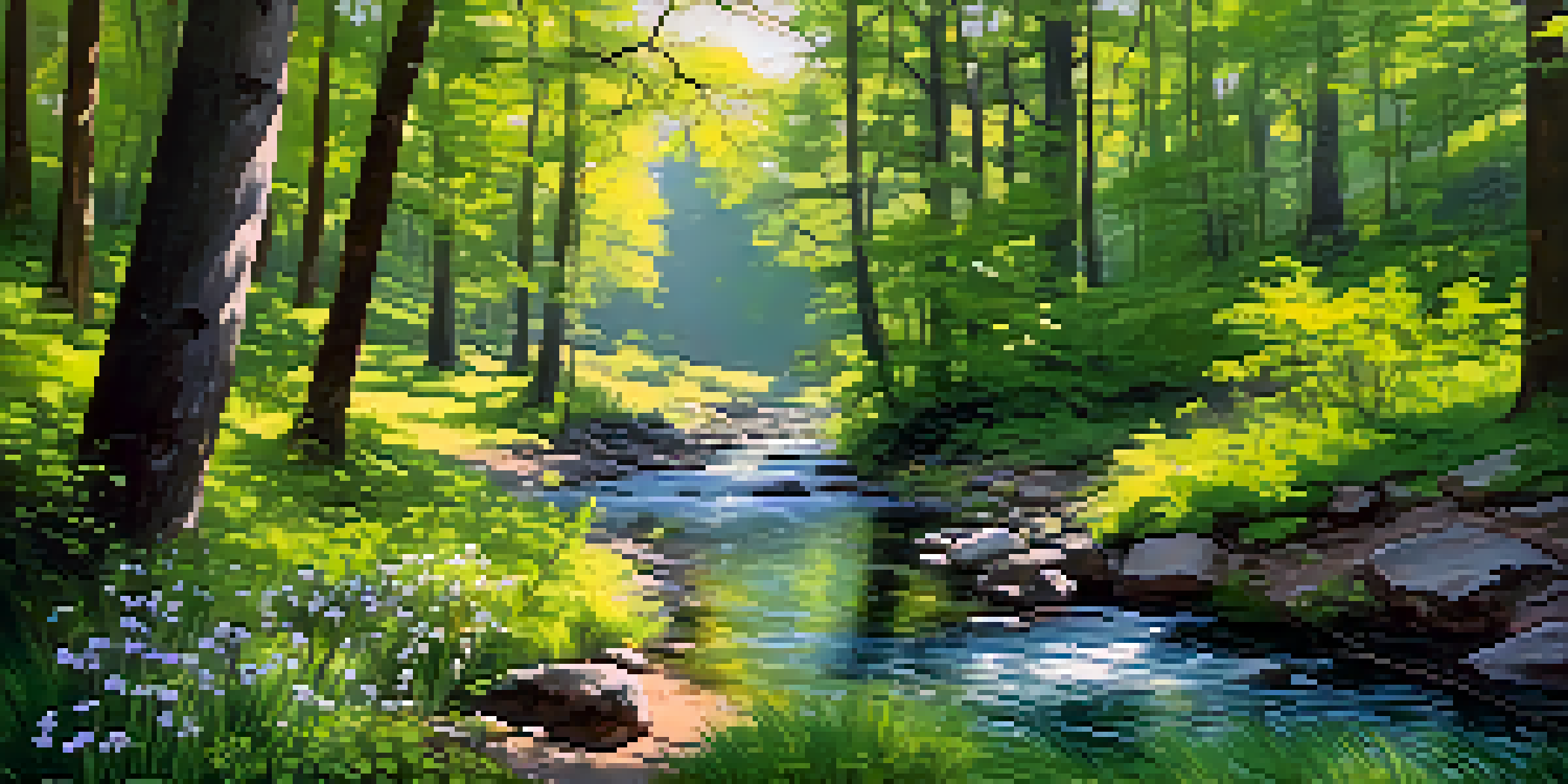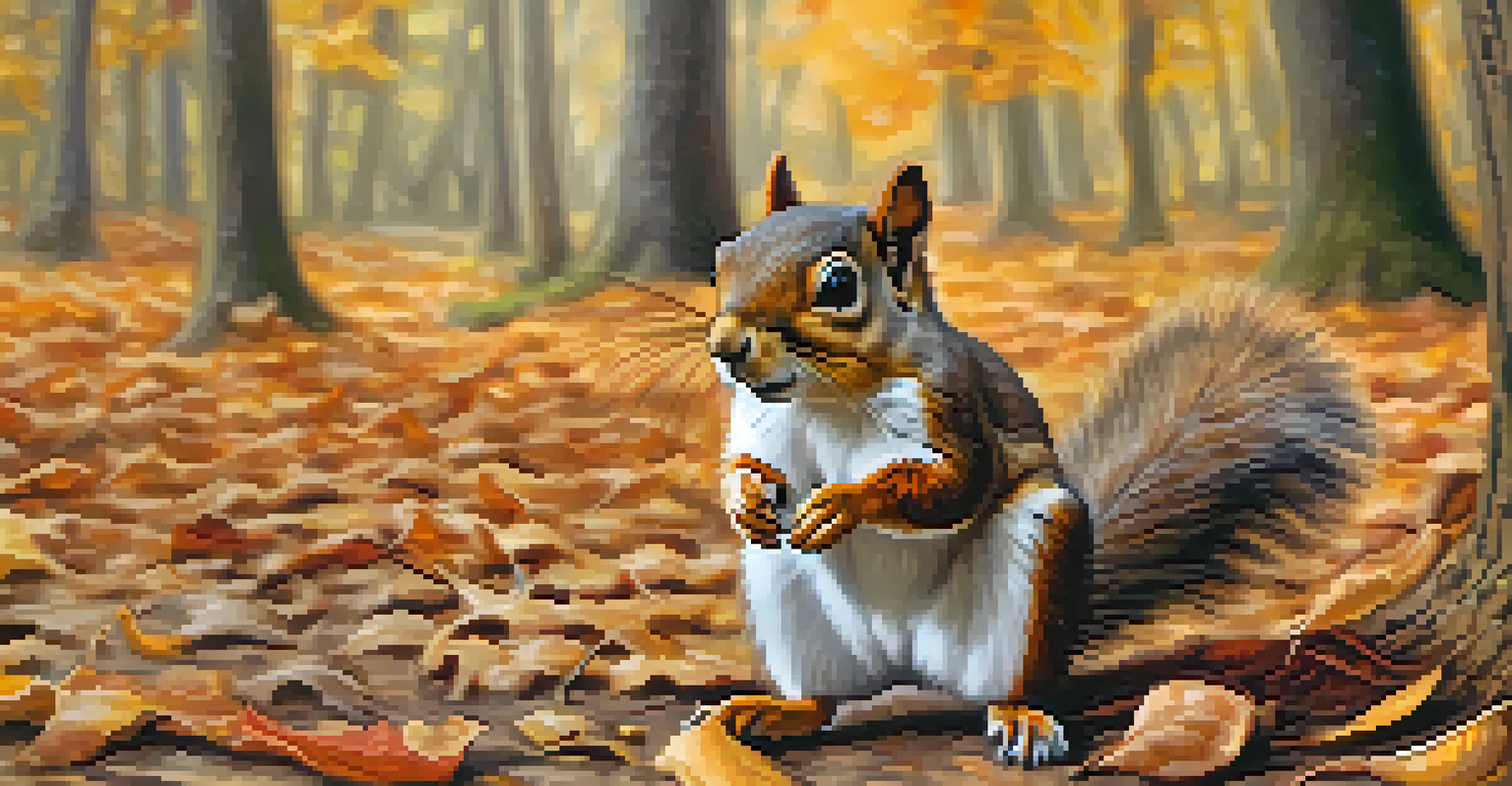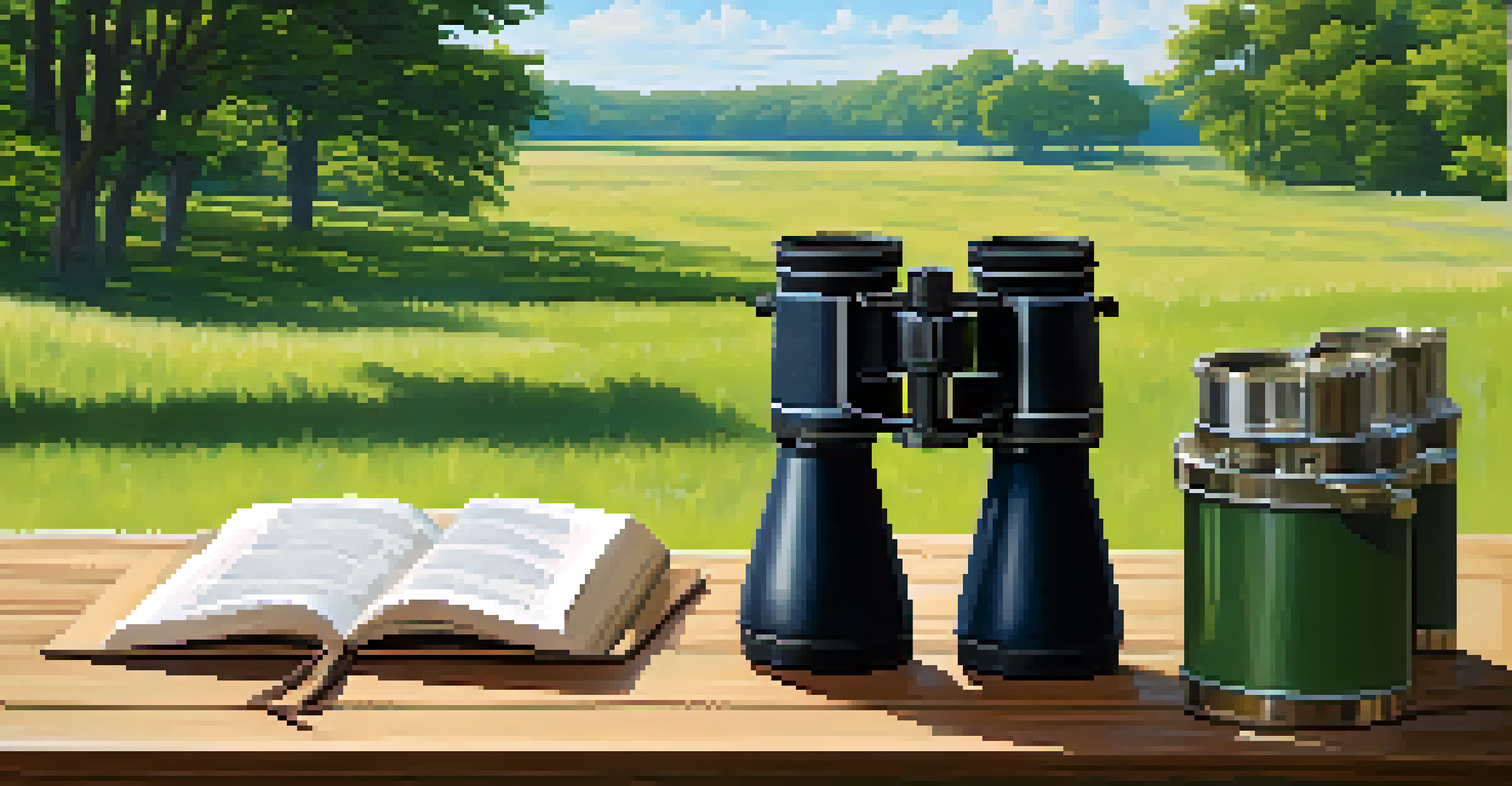Nature Observation: Skills for Identifying Flora and Fauna

Understanding the Basics of Flora and Fauna Identification
To begin your journey in nature observation, it's essential to understand what flora and fauna are. Flora refers to all plant life in a particular region, while fauna encompasses all animal life. Identifying these living beings requires keen observation and a basic knowledge of their characteristics.
In every walk with nature one receives far more than he seeks.
Start by familiarizing yourself with local species. This can be as simple as looking at guidebooks or using apps that help identify plants and animals. Understanding their habitats, behaviors, and seasonal changes can significantly enhance your observation skills.
Remember, the goal isn't just to name what you see but to appreciate the intricate relationships within ecosystems. By observing flora and fauna, you’ll develop a deeper connection to nature, fostering a sense of stewardship for the environment.
Essential Tools for Nature Observation
Having the right tools at your disposal can make a world of difference when observing nature. A good pair of binoculars is essential for spotting distant birds or wildlife without disturbing them. Additionally, a field guide specific to your region can provide valuable insights into the species you encounter.

Consider using a notebook or a digital app to jot down your observations. Sketching or noting the distinctive features of plants and animals can not only enhance your memory but also serves as a personal nature journal, documenting your experiences.
Understanding Flora and Fauna
Recognizing the differences between flora and fauna enhances your nature observation skills and deepens your connection to the environment.
Lastly, don’t forget about your smartphone! There are various apps available that can help you identify species through photos. These tools can make your observations more interactive and engaging, bridging the gap between technology and nature.
Developing Observation Skills Through Practice
Like any skill, becoming proficient in nature observation takes practice. Start by choosing a specific area, such as your backyard or a local park, and visit it regularly. Each visit provides a chance to notice new details and changes in the environment.
Look deep into nature, and then you will understand everything better.
As you observe, challenge yourself to focus on different aspects each time. One day, you might focus on the colors and shapes of flowers, while another day you might pay attention to bird calls or animal tracks. This variety keeps your experiences fresh and exciting.
Engaging in nature walks with friends or joining local nature groups can also enhance your skills. Sharing your observations and learning from others creates a community of nature enthusiasts eager to deepen their understanding.
Recognizing Common Flora: Tips and Techniques
Identifying common plants can be a rewarding experience. Start by focusing on a few key characteristics: leaf shape, flower color, and growth habit. For example, recognizing that a plant has broad, heart-shaped leaves can help you narrow down your options.
Utilizing mnemonic devices can also aid in remembering plant names and features. For instance, associating a flower's color with a memory or story can make it easier to recall later. This playful approach to learning can be both fun and effective.
Essential Tools for Observation
Using tools like binoculars, field guides, and smartphone apps can significantly enrich your nature observation experience.
Lastly, don’t shy away from asking for help. Local botanists or nature enthusiasts often enjoy sharing their knowledge. Building a network can provide you with invaluable insights into identifying flora in your area.
Identifying Common Fauna: Observable Behaviors
When it comes to observing animals, pay attention to their behavior and movements. For example, watching how a squirrel forages for food can reveal a lot about its habits and preferences. This active observation enhances your understanding of animal life.
Listening is another crucial aspect of fauna identification. Birds, for instance, communicate through distinct calls and songs. Learning to recognize these sounds will significantly enrich your nature observations and help you identify species without visual confirmation.
Patience is key when observing wildlife. Animals often have specific routines and behaviors, so finding a comfortable spot to sit quietly can yield fascinating insights. The longer you observe, the more you'll notice about the intricate lives of the creatures around you.
The Role of Seasonal Changes in Observation
Nature observation is a dynamic practice, heavily influenced by the changing seasons. Each season brings a unique array of flora and fauna, along with different behaviors. For example, spring often showcases blooming flowers and the return of migratory birds, while autumn is marked by colorful foliage and animal preparations for winter.
Understanding these seasonal patterns helps you anticipate what to look for during your observations. Keeping track of these changes in a journal or digital app can enhance your experience, allowing you to reflect on how nature evolves throughout the year.
Mindfulness Enhances Experience
Practicing mindfulness while observing nature fosters a deeper appreciation for the intricate details and beauty of the natural world.
Moreover, seasonal changes also affect the way you observe. For instance, summer’s lush greenery might make it harder to spot animals, while winter’s bare branches reveal nests and other hidden habitats. Embrace these variations as part of the joy of observing nature.
Connecting with Nature: Mindfulness and Observation
Nature observation is not just about identifying species; it’s also a path to mindfulness. Engaging fully with your surroundings allows you to appreciate the beauty and complexity of the natural world. Try to immerse yourself in the sights, sounds, and even smells of your environment.
Practicing mindfulness during your observations can help reduce stress and enhance your overall well-being. Taking a moment to breathe deeply and absorb the details around you fosters a deeper connection with nature, leading to more meaningful experiences.

Consider setting aside dedicated time for quiet observation, free from distractions. This practice not only boosts your observation skills but also cultivates an appreciation for the simpler aspects of life, reminding you of the importance of slowing down and being present.